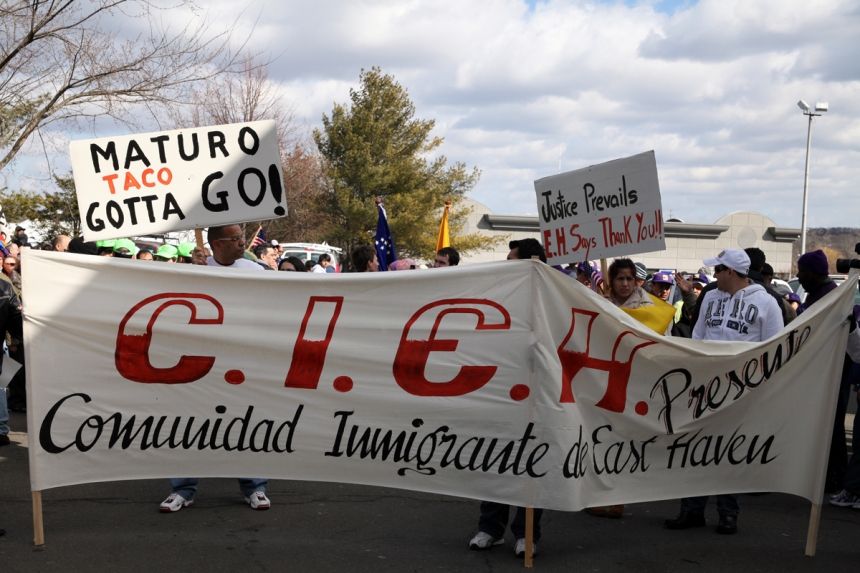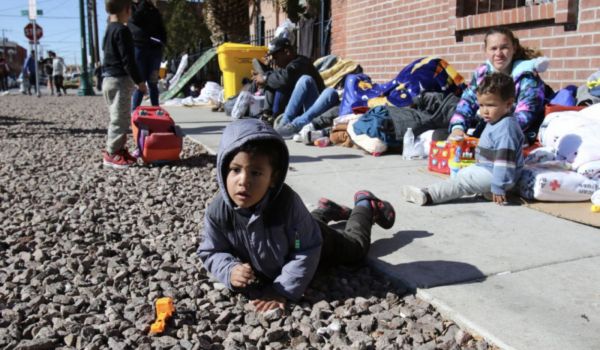Last week, Sarah Kate Kramer wrote in Forefront about troubling immigrant politics in the Connecticut suburb of East Haven, and examined how and why anti-immigrant sentiments there came to a boil earlier this year.
Below, Kramer discusses some positive and negative developments in immigrant relations in cities across the country, and why current tensions may fade over the next few generations.
Next American City: You write a lot about immigrant issues at the website Feet in 2 Worlds. Immigrant intimidation is a common concern in many cities, but what was different about the situation in East Haven? (Happy disclosure: Feet in 2 Worlds is a member of Next American City’s network of independent urban news sites and you can find occasional content from the site in our Daily section)
Sarah Kate Kramer: I would say that East Haven is distinguished on two counts: The racial profiling and harassment the Latino population experienced was extreme, and the immigrant community organized to protest the pattern of abuse and call for change.
Many small cities and suburbs across the nation are seeing a rapid rise in their Latino population, and it’s not uncommon for this demographic shift to cause friction. Communities often have difficulty accepting any type of change, much less one that is fraught with a national political debate. But in East Haven the police harassment reached such a high level that even the federal government got involved. In most other cities, that’s not the case — individual immigrants are subject to abuse, but these crimes often remain unreported. It’s horrible that the immigrant community was subject to such discrimination in East Haven, but I suppose the silver lining is that it exposed the gravity of the situation, and may serve as a wake-up call to other municipalities.
NAC: While East Haven is struggling with its demographic changes, New Haven comes off as quite progressive. What other cities are tackling changing demographics in a positive way?
Kramer: Many cities are recognizing that immigrants bring a lot to the table. Immigrants are disproportionately likely to be entrepreneurs, and a number of cities that experienced population and industry decline in the second half of the 20th century are courting immigrants in the hopes they’ll help revitalize the local economy. The Welcome Dayton program in Dayton, Ohio, is one example. Baltimore is developing a plan to attract immigrants to the city as part of their effort to counter population loss. Under Mayor Michael Bloomberg, New York City has also initiated a number of immigrant-friendly programs, such as expanding language access through city agencies to make it easier for immigrants to interact with government. There are many examples — and of course these are countered in other places with state and local efforts to keep immigrants out, encouraging them to “self-deport,” as former Gov. Romney put it.
NAC: Is there reason to think that immigrant tension will fade in the coming decade?
Kramer: Well, it’s hard to predict because I think that question is tied to the future of the American economy, and whether or not Congress ever passes comprehensive immigration reform. Throughout American history, immigrants have been used as scapegoats at times of economic insecurity. However, there’s no question in my mind that the second and third generation of Latino immigrants will be increasingly integrated into U.S. society — we can already see this happening. It’s undeniable that the face of the U.S. is changing: Over half of the nation’s population growth in the last decade is credited to Latinos, and a lot of that was due to childbirth. Not only will this young population be more assimilated than their parents, its likely they will obtain political power.
In addition, research has shown that there is a generation gap in this country when it comes to the issue of illegal immigration. While many older people remain angry about it, younger people are much more accepting. So I think in the future, yes, the tension will fade, because Latinos will be more integrated — but sometimes things get worse before they get better.

Diana Lind is the former executive director and editor in chief of Next City.





_600_350_80_s_c1.jpg)










